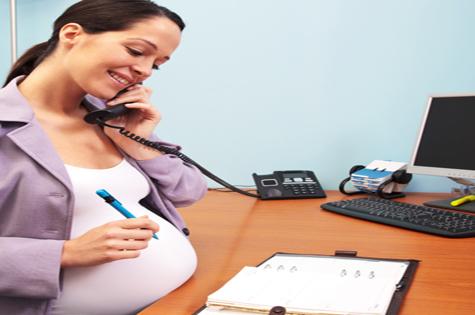Paid parental leave recognises that mums taking care of new babies are increasingly likely to be part of the paid workforce. As with any big piece of social legislation, however, it sometimes takes tinkering to get the formula just right.
To make the best practical family choices, parents need to understand what is available today, what the impact of proposed changes in 2015 might be and what all the commentary and fuss is about.
The state of affairs since 2011
Under the Paid Parental Leave Scheme implemented in 2011, parents may take up to 18 weeks of parental leave at minimum wage (currently around $622 per week before tax) to care for a newborn or newly adopted child. The parent, usually mum, must:
- Be an Australian citizen or permanent resident.
- Have worked for at least 330 hours for 10 of the 13 months before the due date (about one day a week).
- Make less than $150,000 per year.
Just as a point of comparison, the 18 weeks (a little over four months) is still considerably less than the period many paediatricians recommend for breastfeeding. Minimum wage is also better than nothing, but a big step down for many middle-income earners.
In March 2014, the Abbott government proposed new changes, which would address both of these issues, changing the landscape for working families in significant ways.
However, the changes come at a price - and that may be unpalatable to the business community as they have to pay. But working mums and dads live in that world, too, so the balancing act continues.
Proposed changes
The proposed scheme increases both the period of paid parental leave and the maximum payment. It would give eligible working mums of children born or adopted on or after July 1, 2015, six months of pay at:
- Actual wage up to an income cap of $100,000 per year (resulting in a maximum payment of $50,000).
- Superannuation contributions at a guaranteed rate of 9.25 percent.
Unlike current law, the proposed changes would also allow mums making more than $150,000 to participate up to the capped amount. Dads would be limited to two weeks of paid leave, also at the greater of minimum wage or actual wage, plus superannuation.
The program will be funded by a 1.5 percent tax on business over a certain size.
What does this mean for working mums?
Those additional eight weeks of leave will give all families a better chance to build stronger bonds. Eight weeks might seem brief to an adult, but think of it as nearly a third of the new baby’s lifetime.
The change in rate is hugely important for a significant number of working mums who make more than minimum wage but less than $100,000. But it makes less of a difference at the lower and upper ends of the wage scale. Rural women, who typically earn less, see little improvement under the proposal. Working mums making more than $100,000 per year are still rather rare, which is a curious fact for another conversation.
The storm of commentary rages on. Some have criticised this change as too generous, with a potentially negative impact on business and investment. Others note that it would actually make it more difficult for working mums to return to work before the end of the 26-week period because the cost of childcare (not to mention the availability of it) would effectively set families back financially.
The biggest challenge
Finally, of course, some say that the changes, though well intentioned, miss the mark completely. What happens for the next 10, 12 or 18 years? Children stay children for quite a long time, whatever they may tell you to the contrary.
Many argue that the revenues generated by a 1.5% tax would be better spent on building more and improved childcare alternatives.
One thing is clear, though. If parents, mums in particular, are to remain in the workforce and take care of their children, big changes will have to occur in the way we work and how we look after our children. Six months at full wage does not get us all the way there. But for many, it looks like a plausible down payment on the future.



















__small.png)










